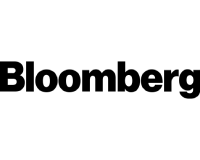New Value For Which Creditor Received A § 503(b)(9) Claim Cannot Offset Preference Liability
Beaulieu Group, LLC (“Beaulieu”) filed for bankruptcy under Chapter 11 of the Bankruptcy Code. PMCM 2, LLC was appointed as the liquidating trustee. The liquidating trustee sued Fabric Sources, Inc. (“Fabric”), a full-service provider of woven products, to avoid approximately $1 million paid to Fabric within 90 days prior to the bankruptcy filing. Fabric moved for summary judgment arguing that goods it provided to Beau- lieu, including goods provided within twenty days prior to the bankruptcy filing, reduced its exposure pursuant to the “subsequent new value” defense under § 547(c)(4) of the Bankruptcy Code.
The trustee argued that since Fabric received a priority claim under § 503(b) (9) of the Bankruptcy Code for the goods it provided within 20 days of the bankruptcy filing, it could not “double dip” and reduce its preference exposure with such goods. Fabric argued that its 503(b) (9) claim did not offset its subsequent new value defense because the claim was not yet paid by the debtor. Fabric further argued that even if its administrative claim were paid later on, it would not be a transfer from the debtor, but, rather, it would be a distribution from the post-confirmation trust, a wholly separate legal entity.
The court agreed with the trustee and ruled that Fabric could not use the new value that gave rise to the § 503(b)(9) claim to offset its preference liability. First, the court noted that even though the trustee did not pay Fabric’s administrative claim, it maintained sufficient reserves to pay all such claims in full and that, for all intents and purposes, the claim was as good as paid. Second, the court opined that just because the debtor transferred its assets to a trust does not mean that the payment did not come from the debtor. The court observed that all the funds that the trust would use to pay creditors would come directly from the debtor for the benefit of such creditors. Thus, the court denied Fabric’s motion for summary judgement.
In re Beaulieu underscores that courts could deny new value credit for goods the debtor received within 20 days prior to the bankruptcy filing. Both plaintiffs and defendants should be mindful of the law in their particular jurisdiction on this issue, as it is unsettled and may vary from place to place.
Purchaser of Unsecured Claim Not Shielded From Claim Disallowance Under Section 502(d)
In re Firestar Diamond Inc.,615 B.R. 161 (Bank. S.D.N.Y. 2020)
Firestar Diamond, Inc. (“Firestar”), a wholesaler of finished jewelry, filed for bankruptcy under Chapter 11 of the Bankruptcy Code. The court appointed Richard Levin as a Chapter 11 trustee. Several banks filed proofs of claim reflecting amounts Firestar owed to three non-debtor entities (the “Non-Debtor Entities”), each of whom sold or pledged their receivables to the banks. The banks in question had no dealings with Firestar.
The trustee objected to the banks’ claims arguing that they are barred under Section 502(d) of the Bankruptcy Code as the Non-Debtor Entities received millions of dollars in fraudulent transfers and preferences from Firestar. Under Section 502(d) “the court shall disallow any claim of any entity that is a transferee of a transfer avoidable under section” 544, 547, and 548 of the Bankruptcy Code. The banks argued that their claims were not subject to disallowance because they did not receive the allegedly fraudulent transfers and preferences from Firestar. The banks relied on In re Enron Corp., 379 B.R. 425 (S.D.N.Y. 2007), which held that disallowance under Section 502(d) is personal to the claimant, not the claim. The trustee argued that claim dis-allowance under Section 502(d) follows the claim regard- less of who owns it. The trustee relied on KB Toys II Inc., 736 F.3d 247 (3d Cir. 2013), which held that claims that were disallowed under Section 502(d) remain disallowed regardless of who owns them.
The court sided with the trustee and ruled that Section 502(d) applied to the banks’ claims as disallowance followed the claim, not the claimant. The court reasoned that an alternative reading would permit a purchaser of a claim to take the claim free and clear of the creditor’s misconduct, depriving the trustee of his ability to ask the bankruptcy court to disallow problematic claims. In addition, the court reasoned that claim purchasers should bear the risk of the subsequent disallowance of claims because they, unlike most creditors in bankruptcy, have ability to reduce and mitigate the risk through negotiation of the sale terms and indemnity clauses in claim transfer agreements.
COMMENTARY
In re Firestar underscores that purchasers of claims purchase such claims subject to all potential objections to the claim. Risks, including potential disallowance, should be fully investigated prior to purchasing a bankruptcy claim and the purchase price should reflect such risks.
Critical Vendors Are Not Insulated From Preference Actions
In re Maxus Energy Corp., et al., 615 B.R. 62 (Bankr. D. Del. 2020)
Tierra Solutions, Inc. (“Tierra”), an environmental remediation company, along with its affiliates, filed for bankruptcy under Chapter 11 of the Bankruptcy Code. The court appointed Joseph J. Farnan Jr. as the liquidating trustee. The trustee filed a complaint against Vista Analytical Laboratory, Inc. (“Vista”), an environmental laboratory operator, to avoid and recover $217,410 paid to Vista within ninety days prior to the petition date. Vista filed for summary judgment arguing that the trustee could not avoid the transfers because it was a critical vendor, and if it were not paid the $217,410 in the preference period, the debtor would have paid that amount under the critical vendor order. Thus, Vista argued that it did not receive “more than such creditor would receive if … the transfer had not been made” as required by § 547(b)(5) of the Bankruptcy Code. The trustee argued that the critical vendor order did not shield Vista from avoidance actions as it was questionable whether Vista’s prepetition general unsecured claim would have been paid in full under the critical vendor order.
The court sided with the trustee and denied the summary judgment motion stating that there was a genuine issue of material fact whether Vista would have actually been paid the $217,410 under the critical vendor order. The court noted that Vista and Tierra never entered into a separate trade agreement pursuant to the critical vendor order to legally bind Tierra to pay Vista its prepetition claim in exchange for Vista’s post-petition services. The court also noted that the authority granted to the debtors under the critical vendor order was discretionary and the debtors were not required to pay Vista. It was therefore entirely plausible that, in fact, Tierra would not have paid Vista the additional $217,410 it received during the preference period.
COMMENTARY
In re Maxus Energy emphasizes that a critical vendor who received a payment under a critical vendor order is not absolutely shielded from a preference action. Critical vendors who wish to be shielded from preference actions should enter into a separate trade agreement to legally bind debtors to pay all of the vendors’ prepetition claims and specifically seek a preference waiver as part of such agreement.
Read full article here.















